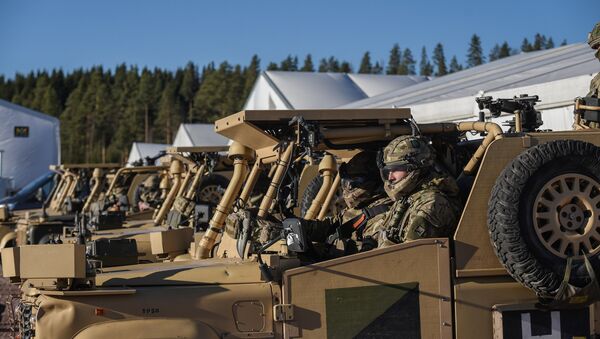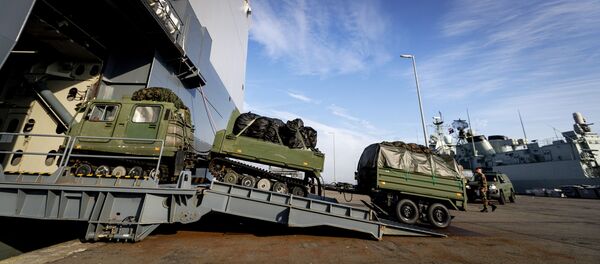On Wednesday, the Russian defense ministry confirmed that two Tu-160 strategic bombers had performed a 10 hour flight over neutral waters in the Barents and Norwegian Seas, prompting the UK to scramble jets to accompany them amid the massive NATO drills in the area. The same day, Russia announced it would be holding naval rocket firing drills near Finnmark, northern Norway, several hundred kilometers from the NATO exercises, starting next week.
NATO members plus partners Sweden and Finland are smack in the middle of drills, with live fire exercises starting running until November 7 in central and eastern Norway, the Danish straits and the Baltic Sea, the Norwegian and North Sea, Iceland, and the airspace above Sweden and Finland, between 200 and 1,000 km of the Russian border. After that, the alliance will run command post drills, with the exercises wrapping up November 24.
Under NATO's scenario, peace-loving Norway is attacked "from the north" by the fictional state of Murinus (Latin for 'characteristic of a rat'), prompting the alliance to invoke Article 5 of the Washington Treaty and come to assist. After stopping the aggressor, the exercises change tack, with NATO forces counterattacking Murinus in combined arms operations.
Russia Not Fooled
The Russian defense ministry has not been fooled by NATO's "Murinus" and "from the north" jargon. Speaking at a meeting of Russian and Belarusian military officials on Wednesday, Defense Minister Sergei Shoigu warned that "NATO's military activity near our borders has reached an unprecedented level since the Cold War."
According to Shoigu, "NATO's policies are aimed at strengthening its advanced military presence on the eastern flank," with the alliance blatantly using the so-called Russian threat to justify its buildup.
Veteran Russian military observer Dr. Konstantin Sivkov said it was hard to argue with Shoigu's logic. "NATO has no one else to fight in the region," he said, speaking to Sputnik about the Trident Juncture drills.
Furthermore, the retired Russian Navy captain suggested that it's no accident that the maneuvers are being held in the Barents and Norwegian Seas, where the Russian nuclear submarines patrol. "They will probably drill the search for and destruction of Russian submarines and surface ships in the Barents Sea and the northern part of the Norwegian Sea," Sivkov noted.
Proven US Strategy
Dr. Sergei Sudakov, a professor at the Russian Academy of Military Sciences, told Sputnik that the Trident Juncture drills were a US-led effort aimed at demonstrating the alliance's continued relevance and justify the need to increase NATO countries' defense spending.
"They're looking to reassure their European partners and demonstrate that the strength of the US and the alliance is greater than ever, and that Europe is well protected. But if the Europeans want such protection, they'll have to pay," the observer explained.
If the US can convince the Europeans of the danger of another European war, that will mean new arms contracts, and new US bases, Sudakov added. "For Washington, this a proven system for generating income, and a way to subjugate other nations; as soon as they place a military base on the territory of another country, it loses its sovereignty."






